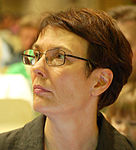Finnish parliamentary election, 1999
|
|
|||||||||||||||||||||||||||||||||||||||||||||||||||||||||||||||||||||||||||||||||||||||||||||||||||||||||||||||||||||||||||||||||||||||||||||
|---|---|---|---|---|---|---|---|---|---|---|---|---|---|---|---|---|---|---|---|---|---|---|---|---|---|---|---|---|---|---|---|---|---|---|---|---|---|---|---|---|---|---|---|---|---|---|---|---|---|---|---|---|---|---|---|---|---|---|---|---|---|---|---|---|---|---|---|---|---|---|---|---|---|---|---|---|---|---|---|---|---|---|---|---|---|---|---|---|---|---|---|---|---|---|---|---|---|---|---|---|---|---|---|---|---|---|---|---|---|---|---|---|---|---|---|---|---|---|---|---|---|---|---|---|---|---|---|---|---|---|---|---|---|---|---|---|---|---|---|---|---|
|
|||||||||||||||||||||||||||||||||||||||||||||||||||||||||||||||||||||||||||||||||||||||||||||||||||||||||||||||||||||||||||||||||||||||||||||
|
All 200 seats to the Parliament 101 seats were needed for a majority |
|||||||||||||||||||||||||||||||||||||||||||||||||||||||||||||||||||||||||||||||||||||||||||||||||||||||||||||||||||||||||||||||||||||||||||||
| Turnout | 65.3% | ||||||||||||||||||||||||||||||||||||||||||||||||||||||||||||||||||||||||||||||||||||||||||||||||||||||||||||||||||||||||||||||||||||||||||||
|
|||||||||||||||||||||||||||||||||||||||||||||||||||||||||||||||||||||||||||||||||||||||||||||||||||||||||||||||||||||||||||||||||||||||||||||
|
|||||||||||||||||||||||||||||||||||||||||||||||||||||||||||||||||||||||||||||||||||||||||||||||||||||||||||||||||||||||||||||||||||||||||||||
Paavo Lipponen
Social Democratic
Paavo Lipponen
Social Democratic
Parliamentary elections were held in Finland on 21 March 1999. Despite suffering significant losses, the Social Democratic Party (SDP) remained the largest party of the Eduskunta and Paavo Lipponen remained Prime Minister.
Prime Minister Paavo Lipponen's five-party "rainbow government" consisting of the SDP, National Coalition Party, Left Alliance, Swedish People's Party and the Green League had been in power since April 1995. It had managed to keep Finland's economy growing, to reduce the state's budget deficit and to create jobs, although it had failed to halve the unemployment rate: in 1995, the unemployment had been 15.4% and in 1999, it still stood at 10.2%. This was, as the governing parties pointed out, still a better record than the previous centre-right government's performance; during its term between 1991 and 1995, the unemployment had risen from 6.6% to 15.4%.
The largest opposition party, the Centre Party, tried to become the largest party overall, and to re-join the government. They called for labour reform, which they claimed would make it easier for employers to hire new employees and for small enterprises to operate. Finland's largest labour unions rejected the proposed work reform, claiming that it would reduce the employees' job security and would excessively increase the employers' power. The Centrists also accused the government of not improving the Finnish economy enough, and of not slowing down sufficiently the large internal migration of Finns from the rural towns and small cities to the large economic growth centres, like the Helsinki and Tampere regions.
...
Wikipedia








